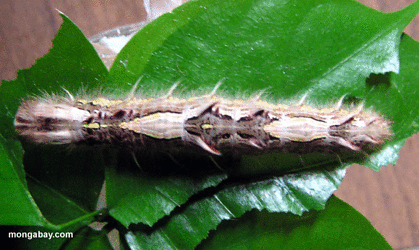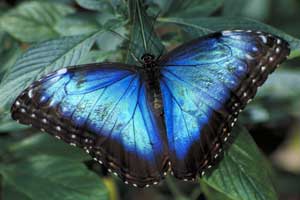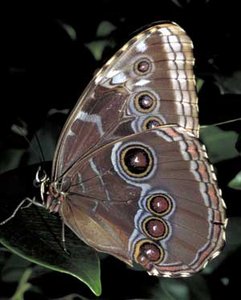by Ariel Strauss


Blue morpho butterfly. Morpho menelaus. © bluebutterfly1
Miss Blue Morpho teaches a first grade class. Each and every one of her students is a lovely insect. Some of her students are flies, some are ladybugs, and others are bumble bees. Miss Blue Morpho is a beautiful butterfly.
B-U-T-T-E-R-F-L-Y
Miss Blue Morpho's class is doing something very special for school this week. Everyday each student is allowed to share a story about their life. Every student already shared their stories, so now it is Miss Blue Morpho's turn to tell about her life as a butterfly.
Miss Blue Morpho starts by telling her class that she is a Blue Morpho Butterfly. Blue Morpho Butterflies are a green blue color. Miss Blue Morpho explains to her class, that like every other butterfly, she has 6 legs, 4 wings, and 2 antennae. Antennae are what insects use to sense things around them. For example, butterflies use their antennae to smell. And her class was very excited when they learned that butterflies also taste with sensors on their legs.
Now she explains to her class about the days when she used to be a caterpillar, and how she started out as an egg. Her entire class was surprised when they learned something as beautiful as she used to be a caterpillar. Blue Morpho caterpillars are a red brown color, with little patches of green.


Morpho menelaus caterpillar. © http://www.Mongabay.com
After a little while, the caterpillar forms a protective covering around its body called a chrysalis.


Caterpillar diagram. © 2005 Howard Hughes Medical Institute.
While hanging from the tree, the caterpillar is inside the chrysalis, transforming into a beautiful butterfly. The process of turning into a butterfly from a caterpillar is called metamorphosis. After some time, when the butterfly is ready, it comes out of the cocoon, and what you see is a pretty butterfly, just like Miss Blue Morpho.
*M-E-T-A-M-O-R-P-H-O-S-I-S*
Miss Blue Morpho now explains something to her class that really surprises them. Even though she looks blue, she really isn't. She tells her students that on the butterflies' wings are scales, and her scales reflect blue light, but her scales aren't really blue.


Morpho menelaus © http://www.Earthsbirthday.org
Like everything else that is living, Blue Morpho butterflies have enemies. To help them hide from predators like birds, the underside of their wings are a brown color to help them blend in to surrounding areas.


Morpho menelaus. © http://www.Earthsbirthday.org
Also, there are 2 little brown spots on the wings, that look like eyes, and that really scares away enemies, but Miss Blue Morpho never scares away her students.
Miss Blue Morpho's story time is almost over, and it is almost time for class to end. All the first graders left class that day with a new fascination for butterflies. They learned so much today. They learned all about Metamorphosis, and how Blue Morpho Butterflies get their blue color, and they also learned about how Miss Blue Morpho keeps herself safe with her brown underside wings.
Information on the Internet
- Where do Butterflies come from? Howard Hughs Medical institute is a great site with fun butterfly activites.
- Blue Morpho Butterfly Great pictures!
- Enchanted Learning: Blue Morpho Butterfly Enchanted Learning is a good source for butterfly information.
- Amazon Insects Wonderful pictures.



 Go to quick links
Go to quick search
Go to navigation for this section of the ToL site
Go to detailed links for the ToL site
Go to quick links
Go to quick search
Go to navigation for this section of the ToL site
Go to detailed links for the ToL site